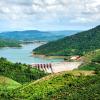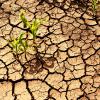
A new study by researchers from IIASA and China investigated the impacts of different levels of global warming on hydropower potential and found that this type of electricity generation benefits more from a 1.5°C than a 2°C climate scenario.
In a sustainable and less carbon-intensive future, hydropower will play an increasingly crucial role as an important source of renewable and clean energy in the world’s overall energy supply. In fact, hydropower generation has doubled over the last three decades and is projected to double again from the present level by 2050.
Global warming is however threatening the world’s water supplies, posing a significant threat to hydropower generation, which is a problem in light of the continuous increase in energy demand due to global population growth and socioeconomic development.
The study, undertaken by researchers from IIASA in collaboration with colleagues at several Chinese institutions and published in the journal Water Resources Research, employed a coupled hydrological and techno-economic model framework to identify optimal locations for hydropower plants under global warming levels of 1.5°C and 2°C, while also considering gross hydropower potential, power consumption, and economic factors. According to the authors, while determining the effects of different levels of global warming has become a hot topic in water resources research, there are still relatively few studies on the impacts of different global warming levels on hydropower potential.
The researchers specifically looked at the potential for hydropower production under the two different levels of warming in Sumatra, one of the Sunda Islands of western Indonesia. Sumatra was chosen as it is vulnerable to global warming because of sea level rise, and the island’s environmental conditions make it an ideal location for developing and utilizing hydropower resources. They also modeled and visualized optimal locations of hydropower plants using the IIASA BeWhere model, and discussed hydropower production based on selected hydropower plants and the reduction in carbon emissions that would result from using hydropower instead of fossil fuels.
The results show that global warming levels of both 1.5°C and 2°C will have a positive impact on the hydropower production of Sumatra relative to the historical period. The ratio of hydropower production to power demand provided by 1.5°C of global warming is however greater than that provided by 2°C of global warming under a scenario that assumes stabilization without overshooting the target after 2100. This is due to a decrease in precipitation and the fact that the south east of Indonesia observes the highest discharge decrease under this scenario. In addition, the reduction in CO2 emissions under global warming of 1.5°C is greater than that achieved under global warming of 2°C, which reveals that global warming decreases the benefits necessary to relieve global warming levels. The findings also illustrate the tension between greenhouse gas-related goals and ecosystem conservation-related goals by considering the trade-off between the protected areas and hydropower plant expansion.
“Our study could significantly contribute to establishing a basis for decision making on energy security under 1.5°C and 2°C global warming scenarios. Our findings can also potentially be an important basis for a large range of follow-up studies to, for instance, investigate the trade-off between forest conservancy and hydropower development, to contribute to the achievement of countries’ Nationally Determined Contributions under the Paris Agreement,” concludes study lead author Ying Meng, who started work on this project as a participant of the 2018 IIASA Young Scientists Summer Program (YSSP). She is currently affiliated with the School of Environment at the Harbin Institute of Technology in China.
Based on a press release produced by the School of Environment, Harbin Institute of Technology, China.
Reference:
Meng Y, Liu J, Leduc S, Mesfun S, Kraxner F, Mao G, Qi W, & Wang Z (2020). Hydropower production benefits more from 1.5°C than 2°C climate scenario. Water Resources Research DOI: 10.1029/2019WR025519
News

25 April 2024
Climate change could become the main driver of biodiversity decline by mid-century

09 April 2024
Understanding the impacts of migration on the Austrian economy

08 April 2024

